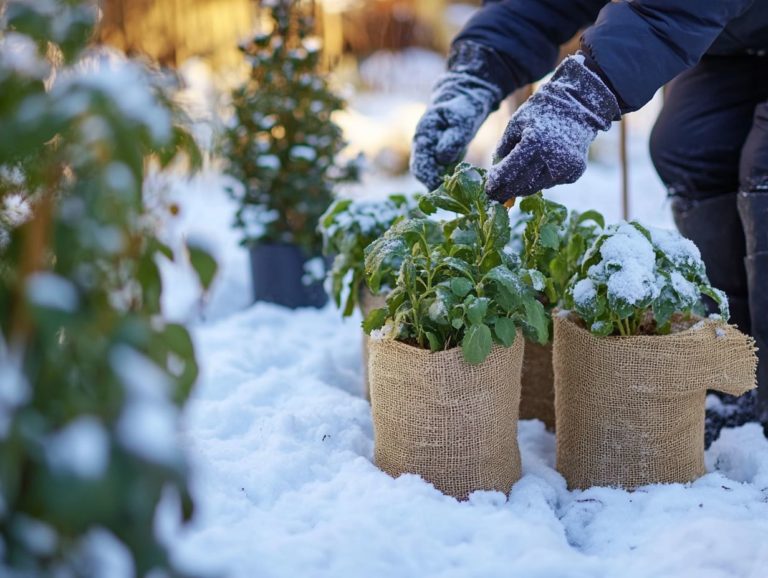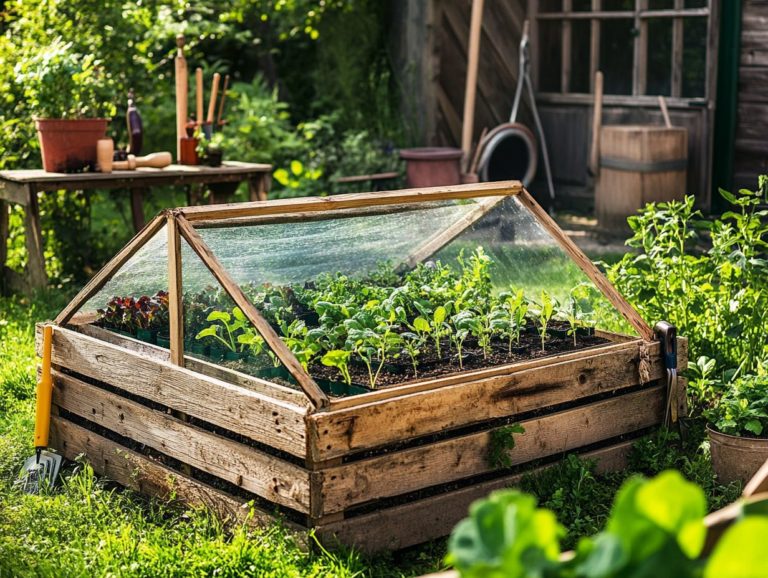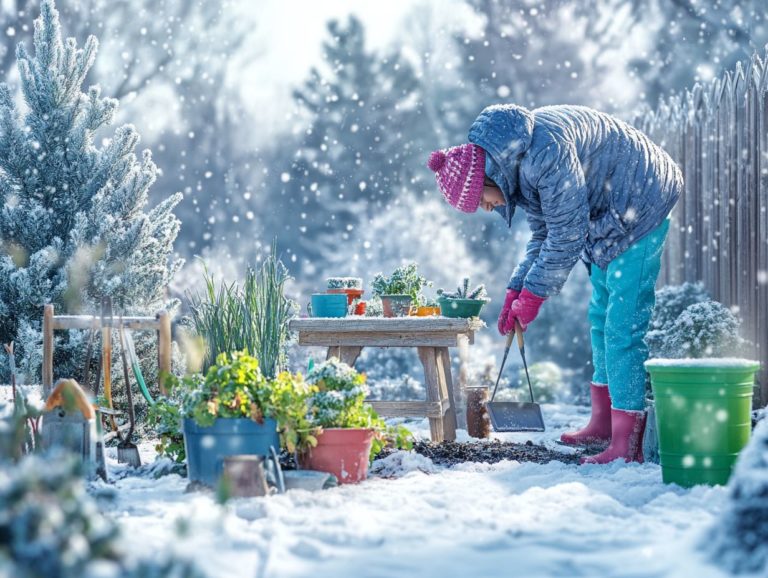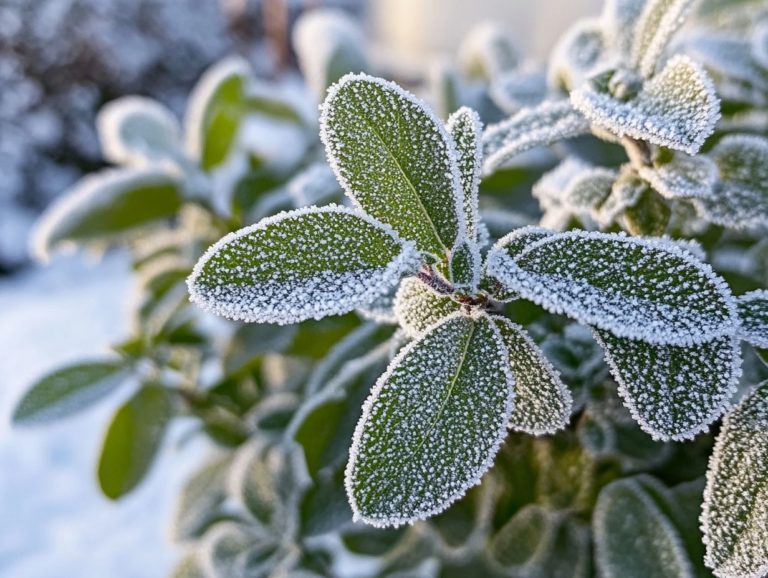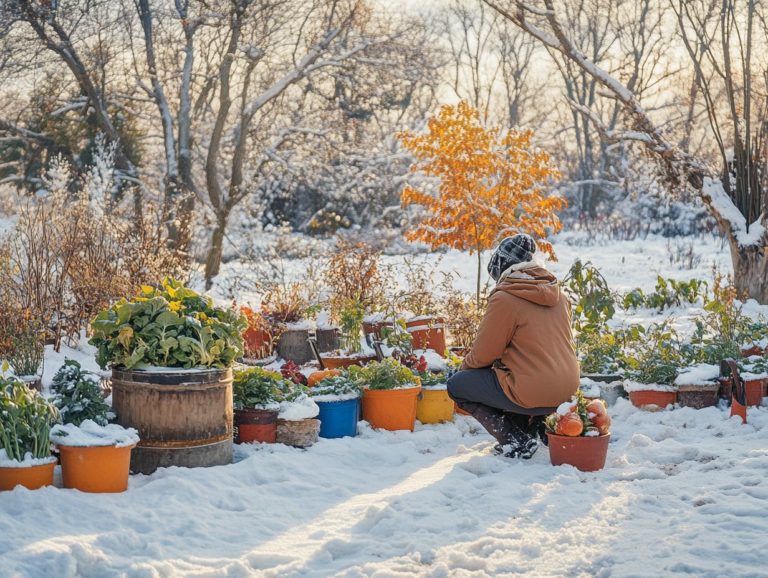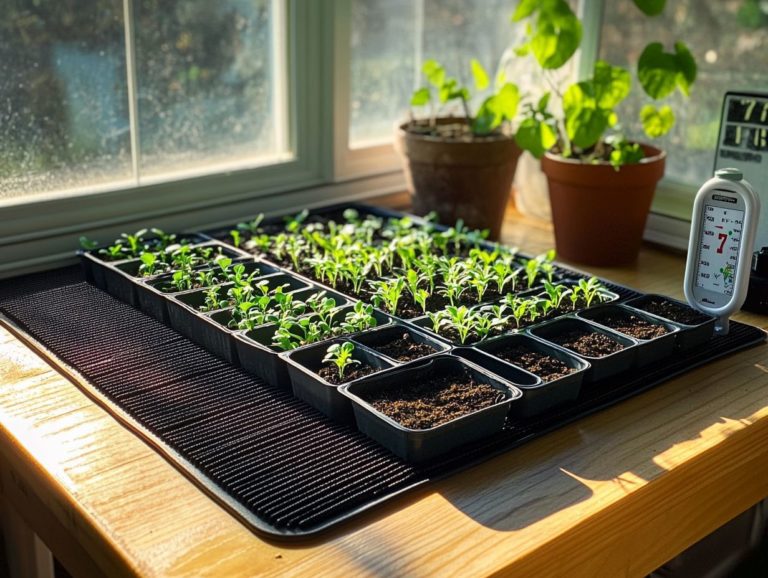Creating a Wildlife-Friendly Winter Garden
As winter envelops the landscape, you might assume that wildlife takes a backseat until the warmth of spring returns. However, nature’s resilient creatures have developed remarkable strategies to thrive during the cold months.
This article delves into the fascinating ways animals survive winter and offers guidance on creating a welcoming winter garden that supports them.
From selecting the right plants that provide both food and shelter to ensuring water sources are available and crafting cozy habitats, you ll uncover practical tips to attract birds, squirrels, and other small mammals all while preserving a vibrant winter garden!
Explore how you can transform your garden into a winter haven for wildlife! Make a positive impact on our ecosystem today!
Contents
- Key Takeaways:
- Understanding Wildlife in Winter
- Designing Your Winter Garden for Wildlife
- Attracting Specific Wildlife Species
- Creating a Winter Habitat
- Maintaining Your Winter Garden
- Winter Garden Care Tips
- Dealing with Pests and Predators
- Frequently Asked Questions
- What is a wildlife-friendly winter garden?
- Why is it important to create a wildlife-friendly winter garden?
- What are some key elements to consider when creating a wildlife-friendly winter garden?
- How can I attract birds to my wildlife-friendly winter garden?
- What are some tips for maintaining a wildlife-friendly winter garden?
- Are there any potential challenges to creating a wildlife-friendly winter garden?
Key Takeaways:
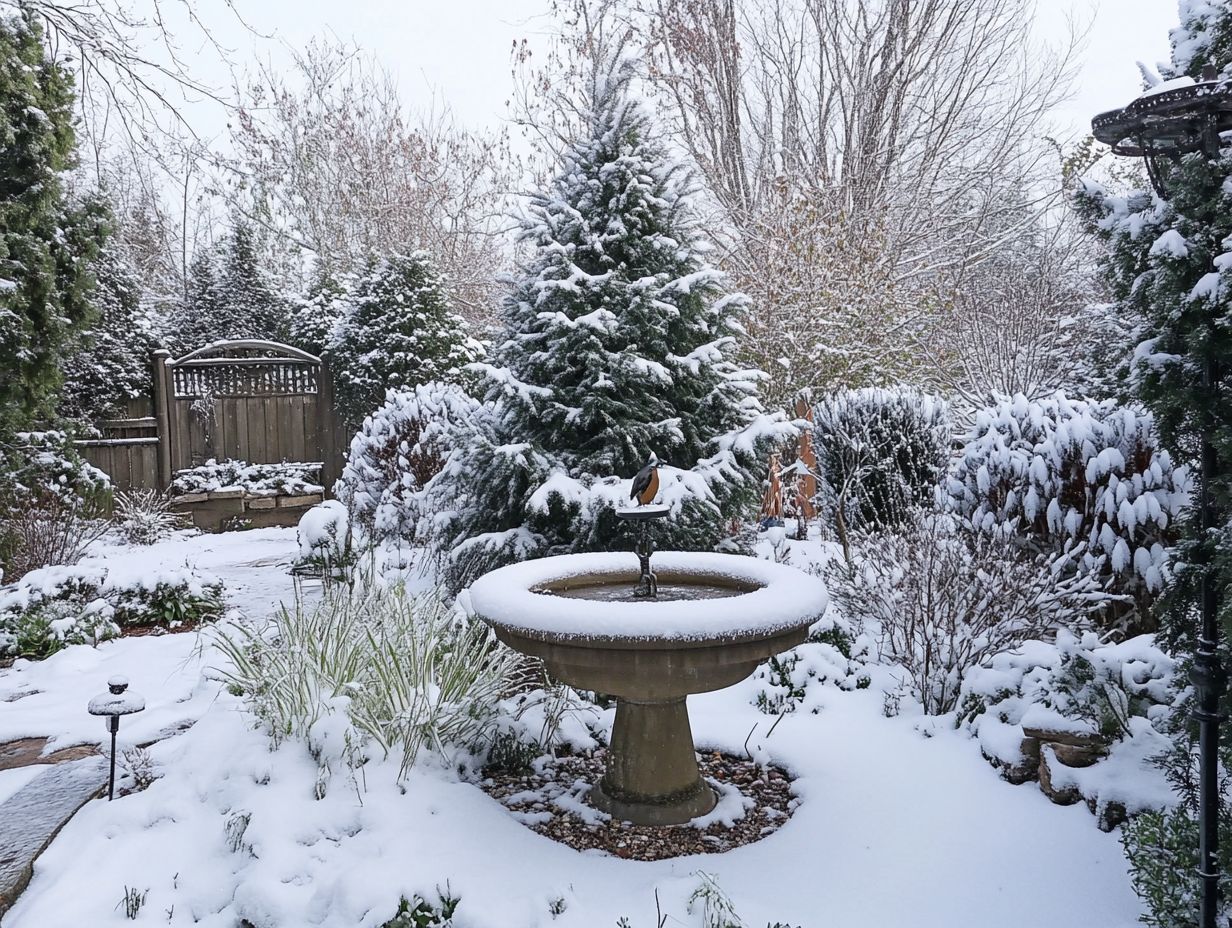
- Understanding the needs of wildlife in winter can help you create a welcoming winter garden.
- Selecting plants that provide food and shelter, and incorporating water sources, can attract a variety of wildlife.
- Building shelters and using natural materials in your garden can create a safe and cozy habitat for winter animals.
Understanding Wildlife in Winter
Understanding wildlife in winter is essential, whether you’re a homeowner or a conservationist, especially in places like the UK where the climate greatly affects local species and their habitats.
During this season, many animals like birds and mammals adapt to endure the harsh conditions. Their needs change as food sources diminish and temperatures fall.
By grasping these adaptations, you can create effective wildlife-friendly spaces that not only support their survival but also contribute to a healthier ecosystem overall.
How Animals Survive in Winter
Animals have developed impressive strategies to endure the challenges of winter, including hibernation, which is when animals sleep for long periods to save energy during cold months, migration, and finding alternative food sources.
Take mammals like bears, for instance. They retreat into their cozy dens, letting their body temperature drop to conserve energy while living off their fat reserves. These adaptations help them survive the winter months.
Then there are the birds; many species make remarkable migrations, traveling thousands of miles to reach warmer places where food like seeds and insects is easier to find. This is crucial for their survival as they look for high-calorie food sources.
These extraordinary journeys not only highlight the resilience and adaptability of wildlife but also reveal the delicate balance within ecosystems. After all, changing weather patterns can drastically affect food availability for both migratory and non-migratory species.
Understanding these behaviors gives us valuable insights into how these creatures thrive, even when faced with environmental challenges. Observations of their interactions with the environment can lead to better gardening practices.
Designing Your Winter Garden for Wildlife
Designing your winter garden for wildlife offers a great chance to provide essential resources and habitats for various species. For effective strategies, consider creating a winter garden plan to ensure your outdoor space thrives as an ecosystem even in the colder months.
By thoughtfully adding features such as native plants and sheltered areas, you can create an inviting environment where wildlife can find food, water, and refuge from harsh conditions. Adding ponds can also enhance the space.
This effort not only makes your garden look beautiful but also plays a big part in local biodiversity and conservation efforts.
Choosing Plants for Food and Shelter
Select the right native plants for your winter garden. These plants provide food and shelter for local wildlife, helping birds and beneficial insects survive the colder months.
Native shrubs like elderberry and serviceberry attract songbirds with their nutritious berries. The structures of brown-eyed Susans and coneflowers offer shelter for beneficial insects.
By adding diverse native species to your garden, you create a refuge for various wildlife. This fosters a vibrant ecosystem, even in harsh winter conditions.
This approach promotes healthier soil and reduces the need for chemical fertilizers. It makes your gardening efforts more environmentally friendly and sustainable.
Providing Water Sources
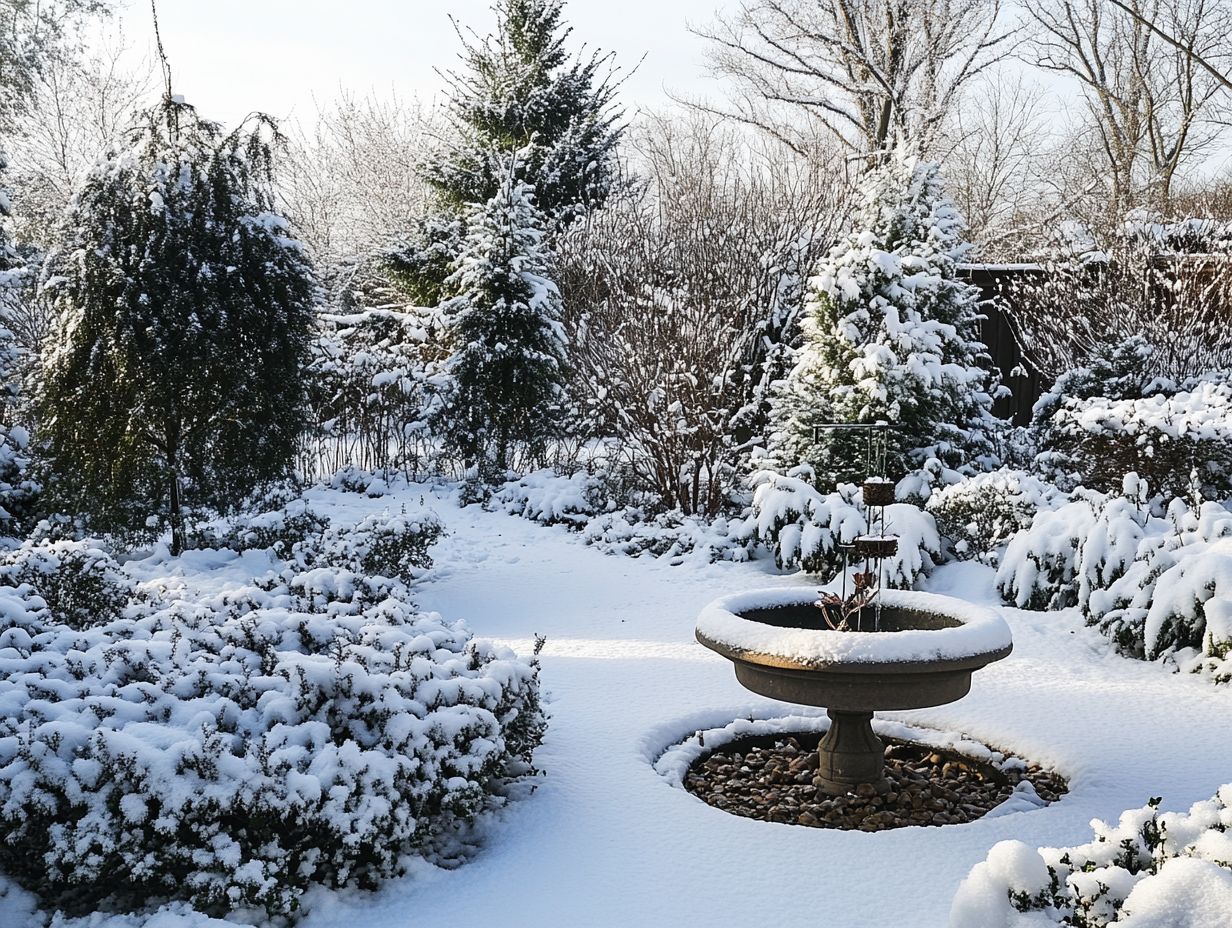
Make your garden a wildlife haven by providing accessible water sources. Natural hydration options may freeze or dwindle, so consider adding a clean pond.
Features like small ponds, decorative bird baths, or simple water dishes enhance your garden’s beauty. They ensure that visiting birds and other creatures have the moisture they need.
By designing your garden with clean water sources, you support local wildlife. Imagine the soothing sounds of splashing water and cheerful birdsong creating your outdoor haven.
Attracting Specific Wildlife Species
Attracting specific wildlife species to your winter garden can enhance your experience and support local ecosystems, especially when you consider planning a winter garden for kids.
Creating a healthy habitat for birds, squirrels, chipmunks, and rabbits fosters a rewarding relationship with nature. You can observe local wildlife more closely.
Birds
Birds play essential roles in winter ecosystems. Offering feeders filled with high-calorie food can attract various species to your garden.
Use different types of feeders like tube, suet, and platform feeders to cater to the diverse tastes of birds. Each feeder type accommodates specific food options, such as sunflower seeds, suet made from animal fat, and nectar for hummingbirds.
Attracting birds during winter not only beautifies your landscape but also maintains ecological balance. Birds contribute significantly to pest control, seed dispersal, and pollination.
Squirrels and Chipmunks
Squirrels and chipmunks can be delightful guests in winter gardens. Offer suitable food sources to help them thrive during colder months.
To attract these lively mammals, create an inviting environment that meets their dietary preferences and habitat needs. Place feeders with seeds, nuts, and dried fruits to provide nourishment when food is scarce.
Designate quiet, sheltered areas for nesting to encourage longer visits. Native plants like sunflowers or berry-producing shrubs enhance biodiversity and serve as a natural food buffet, enticing frequent visits from these charming creatures.
Rabbits and Other Small Mammals
Rabbits and other small mammals can thrive in your winter garden. Thoughtfully designed habitats and food sources enhance biodiversity and ecological health.
Creating environments that offer shelter and sustenance is crucial. Incorporate dense foliage, brush piles, and raised beds to provide hiding spots from predators and cozy nesting areas.
Adding a variety of plants that produce edible treats like clover and dandelion ensures these animals have the nutrition they need. A winter landscape filled with native species attracts rabbits and supports other small mammals.
With mindful choices in garden design, you can positively impact local wildlife. Your efforts contribute to conservation in your area.
Creating a Winter Habitat
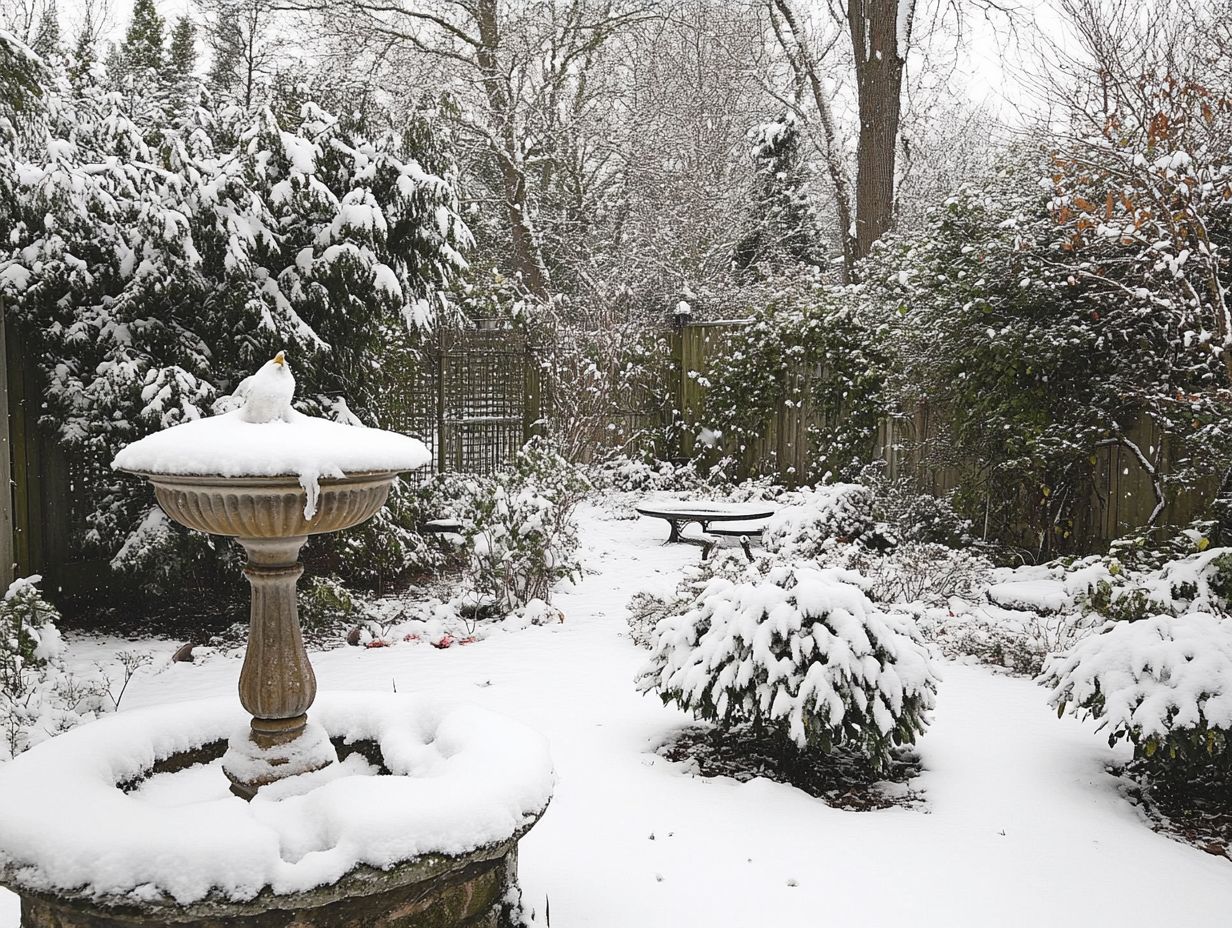
Creating a winter habitat for local wildlife means building shelters and nesting boxes. These safe havens help animals escape harsh conditions and nurture their young.
Your efforts contribute to a thriving ecosystem. These creatures gain protection during the cold months and foster a healthy interaction with the land.
Building Shelters and Nesting Boxes
Building shelters and nesting boxes is a practical way to protect wildlife in winter. These secure spaces allow animals to rest and breed safely.
This practice helps maintain a balanced ecosystem. Choose materials free from harmful chemicals and toxins to ensure the safety of animals.
Untreated wood is great for nesting boxes. Soft grasses or straw make cozy bedding inside.
Proper drainage keeps the interior dry and safe from the elements. This is crucial for small mammals and birds seeking shelter.
With these thoughtful measures, you can foster an environment where wildlife thrives.
Using Natural Materials
Using natural materials for shelters creates safe havens for wildlife, which is essential for maintaining the ecological balance of your winter garden. For more tips, learn how to create a winter garden atmosphere.
Materials like straw bales, reclaimed wood, and stone provide thermal insulation and durability. These materials blend effortlessly into the landscape.
Picture cozy nooks from straw bales, perfect for small mammals. Wooden structures become inviting nesting sites for birds.
Choosing natural stone reduces the carbon footprint associated with synthetic alternatives. Prioritizing eco-friendly choices fosters a healthier habitat.
This encourages biodiversity, supports local ecosystems, and contributes to a sustainable future.
Maintaining Your Winter Garden
Maintaining your winter garden is crucial for supporting local wildlife. Regular care is essential to tackle seasonal challenges like pests and harsh weather.
With consistent management, your garden will thrive. This fosters a healthy habitat for all its inhabitants.
Winter Garden Care Tips
Using good winter garden care tips can greatly enhance the health of your garden and the wildlife that relies on it, ensuring sustainability throughout the colder months.
Regularly monitoring soil moisture levels is essential, as frozen ground can prevent your plants from accessing the water they need. Adjusting the thickness of your mulch, which is material spread over soil to protect plants, will protect roots from drastic temperature fluctuations and help retain moisture.
It’s also important to monitor for any signs of pests or diseases, as some can stubbornly persist even in winter. Providing food sources, like seed feeders for birds or brush piles for small mammals, promotes a thriving ecosystem.
Taking this care will create a vibrant garden atmosphere and support local wildlife through their most challenging season.
Dealing with Pests and Predators
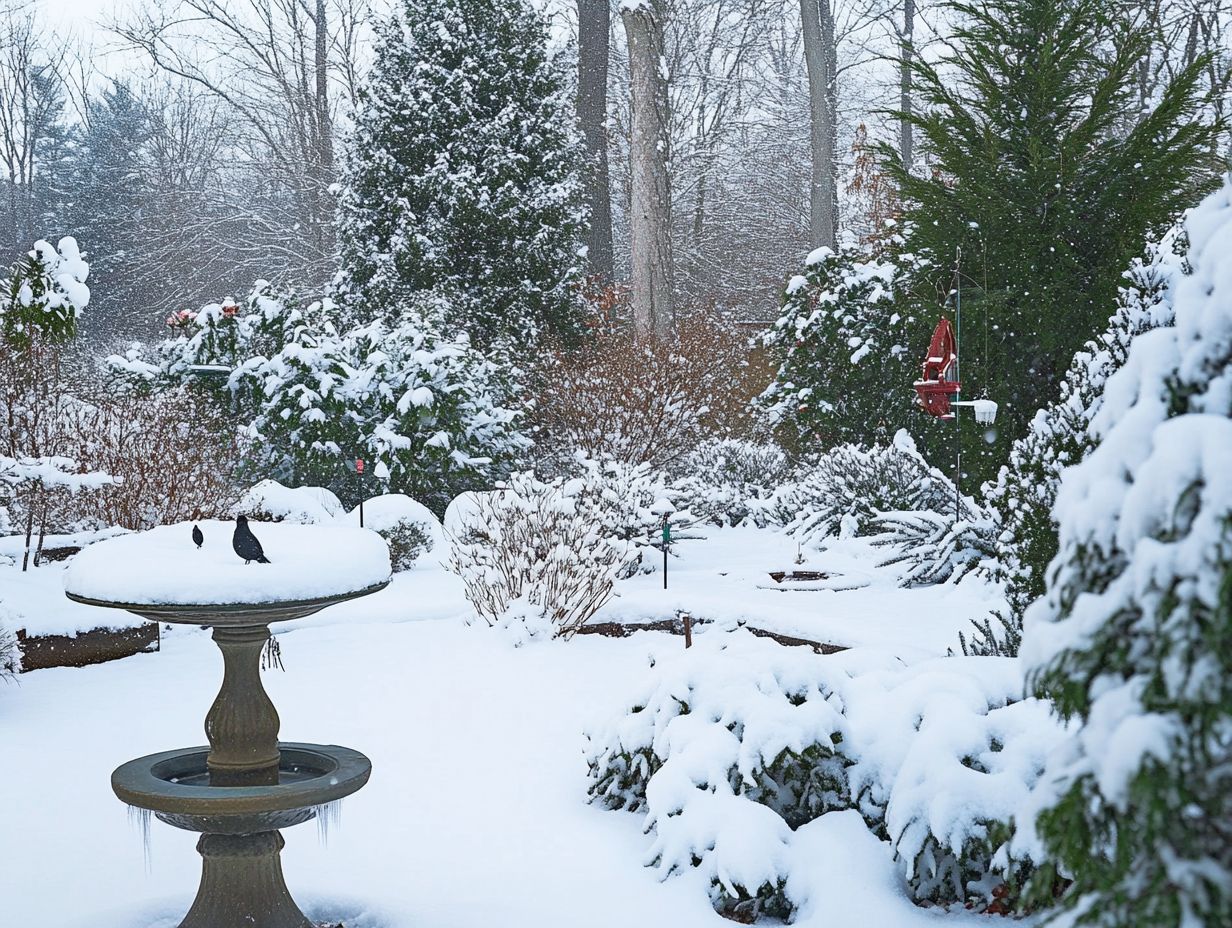
Dealing with pests and predators effectively is essential for maintaining a balanced ecosystem in your winter garden while ensuring that beneficial wildlife remains protected.
To achieve this balance, you can embrace a variety of organic and wildlife-friendly strategies that deter harmful species and promote a healthy environment. For instance, utilizing companion planting can create natural barriers. Introducing beneficial insects like ladybugs or lacewings will help reduce aphid populations without harmful chemicals.
Employing physical barriers, such as row covers, and handpicking larger pests can further safeguard your precious plants. Regularly monitoring your garden for signs of pest activity allows for timely intervention, fostering an ecosystem where every creature, from pollinators to predators, can coexist harmoniously.
Frequently Asked Questions
What is a wildlife-friendly winter garden?
A wildlife-friendly winter garden is designed to provide food, shelter, and protection for wildlife during the cold winter months. It includes features such as native plants, bird feeders, and nesting boxes to support and attract various species. For more ideas, check out this guide on creating a winter wildlife habitat in your garden.
Why is it important to create a wildlife-friendly winter garden?
Creating a wildlife-friendly winter garden is important for several reasons. It helps support and preserve local wildlife populations, provides a sustainable food source for animals during winter when food is scarce, and you can enhance your efforts by following tips from creating a winter garden design, adding beauty and diversity to your garden.
What are some key elements to consider when creating a wildlife-friendly winter garden?
Key elements include having a variety of native plants for food and shelter, providing a water source, creating different levels of vegetation for shelter, and incorporating natural materials such as fallen leaves and logs.
How can I attract birds to my wildlife-friendly winter garden?
You can attract birds by providing a variety of bird feeders with different seeds, nuts, and suet. Additionally, planting native trees and shrubs that produce berries and fruits that birds love to eat will help.
What are some tips for maintaining a wildlife-friendly winter garden?
To maintain a wildlife-friendly winter garden, avoid using pesticides and herbicides that can harm wildlife. Additionally, consider selecting plants for a winter garden that support local fauna. Keep bird feeders clean to prevent disease, and regularly clean and refill water sources. Leaving dead plant material provides shelter for wildlife during winter.
Are there any potential challenges to creating a wildlife-friendly winter garden?
One potential challenge is dealing with pests and predators attracted to your wildlife-friendly winter garden. You may also need to plant different varieties of plants to accommodate various wildlife species. To enhance the beauty of your garden, consider exploring creative ways to decorate your winter garden. Additionally, maintaining a wildlife-friendly garden may require more effort and patience compared to a traditional garden.
Start your wildlife-friendly winter garden today and make a difference for our local wildlife!

